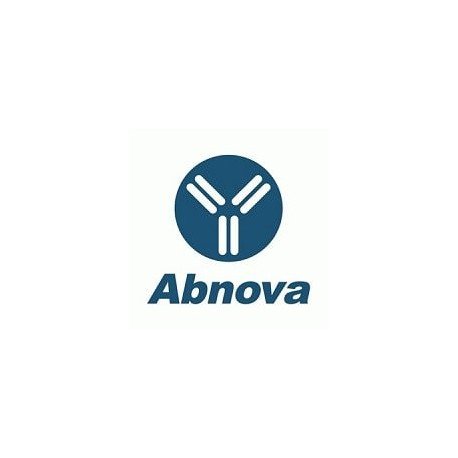Cart 0 Product Products (empty)
No products
To be determined Shipping
0,00 € Total
Prices are tax excluded
Product successfully added to your shopping cart
Quantity
Total
There are 0 items in your cart. There is 1 item in your cart.
Total products (tax excl.)
Total shipping (tax excl.) To be determined
Total (tax excl.)
Data sheet of ADIPOQ monoclonal antibody, clone 1G12
| Brand | Abnova |
| Product type | Primary antibodies |
| Reactivity | Human,Mouse |
| Host species | Mouse |
| Applications | ELISA,WB-Re |
More info about ADIPOQ monoclonal antibody, clone 1G12
| Brand: | Abnova |
| Reference: | MAB1063 |
| Product name: | ADIPOQ monoclonal antibody, clone 1G12 |
| Product description: | Mouse monoclonal antibody raised against partial recombinant ADIPOQ. |
| Clone: | 1G12 |
| Isotype: | IgG1, kappa |
| Gene id: | 9370 |
| Gene name: | ADIPOQ |
| Gene alias: | ACDC|ACRP30|ADPN|APM-1|APM1|GBP28|adiponectin |
| Gene description: | adiponectin, C1Q and collagen domain containing |
| Genbank accession: | NM_004797 |
| Immunogen: | Recombinant protein corresponding to amino acids 15-244 of human ADIPOQ. |
| Protein accession: | NP_004788 |
| Form: | Liquid |
| Recommend dilutions: | Western Blot (1:250-1:1000) The optimal working dilution should be determined by the end user. |
| Storage buffer: | In PBS, pH 7.4 (0.09% sodium azide) |
| Storage instruction: | Store at -20°C. Aliquot to avoid repeated freezing and thawing. |
| Note: | This product contains sodium azide: a POISONOUS AND HAZARDOUS SUBSTANCE which should be handled by trained staff only. |
| Product type: | Primary antibodies |
| Host species: | Mouse |
| Antigen species / target species: | Human |
| Specificity: | This antibody has the specificity against globular domain of ADIPOQ. |
| Reactivity: | Human,Mouse |
| Application image: |  |
| Application image note: | Western blot analysis of recombinant proteins and mouse liver lysates. To probed with ADIPOQ monoclonal antibody, clone 1G12 (1 : 500) (Cat # MAB1063). Proteins were visualized using a goat anti - mouse secondary antibody conjugated to HRP and an ECL detection system. 1 : Recombinant human ADIPOQ protein (full lenghth). 2 : Recombinant human globular domain of ADIPOQ fusion protein. 3 : Recombinant mouse globular domain of ADIPOQ protein. 4 : Mouse liver lysates. Arrows indicate the oligomer and monomer of ADIPOQ protein. |
| Applications: | ELISA,WB-Re |
| Shipping condition: | Dry Ice |
| Publications: | The adipocyte-secreted protein Acrp30 enhances hepatic insulin action.Berg AH, Combs TP, Du X, Brownlee M, Scherer PE. Nat Med. 2001 Aug;7(8):947-53. |


